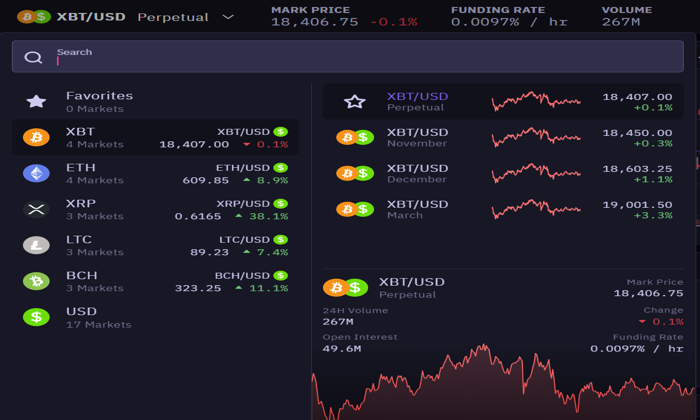In the volatile world of cryptocurrency, the recent Bitcoin whale liquidation has captured the attention of traders and investors alike. Prominent trader James Wynn suffered a staggering loss of nearly $100 million on the Hyperliquid exchange after Bitcoin’s price plummeted below $105,000. This dramatic event underscores the risks associated with leverage trading in a turbulent crypto market, where sudden price drops can lead to significant liquidations. As the BTC price drop and market volatility triggered a cascade of liquidations, the incident serves as a cautionary tale for those engaged in high-stakes trading. The unpredictable nature of such trades has once again highlighted the importance of risk management and awareness in the fast-paced world of digital currencies.
In the fast-evolving cryptocurrency landscape, the recent event involving a massive liquidation of Bitcoin positions has sparked intense discussions among investors and the trading community. Referred to colloquially as a ‘whale liquidation’, this incident saw major losses incurred by a single trader, James Wynn, after a steep decline in Bitcoin’s price. The ripple effects of such market movements can be felt across the landscape, influencing leverage trading strategies and investor sentiment alike. As the crypto market experiences fluctuations, understanding the implications of these high-leverage positions becomes critical for both seasoned traders and newcomers. The lessons learned from this liquidation episode are invaluable, reminding all participants to exercise caution when navigating the complexities of leveraged crypto trading.
The Impact of Bitcoin Whale Liquidation on Market Sentiment
The recent liquidation of Bitcoin whale James Wynn, who lost nearly $100 million in leveraged positions, has sent ripples through the crypto market, impacting both trader sentiment and market dynamics. The dramatic fall of BTC below $105,000, compounded by external factors such as new U.S. tariff announcements, illustrates how sensitive the cryptocurrency sphere is to various economic triggers. As the liquidation unfolded, it not only wiped out Wynn’s significant positions but also led to a cascade of liquidations across the market, raising caution among traders heavy on leverage.
In the face of such high-stakes trading disaster, the crypto community is reminded of the inherent risks associated with leveraging trading. Many traders on platforms like Hyperliquid witnessed their positions turn from potential profits into significant losses, triggering emotional reactions across social media platforms, particularly Crypto Twitter. Traders looking for guidance are being advised to reassess their tolerance for risk and consider more conservative strategies to navigate the ever-volatile landscape.
James Wynn’s High-Leverage Trading Strategy
James Wynn’s approach to trading represents a double-edged sword—while his strategies led him to a peak wealth of $100 million, the recent downturn has proven just how quickly fortunes can change. Operating with 40x leverage, Wynn controlled over $1 billion in Bitcoin with only $20 million in collateral, a move that embodies the extreme risk many investors chase in the fast-paced world of crypto trading. This level of leverage can yield impressive gains, but as the recent liquidation illustrates, it can also result in devastating losses.
Wynn’s trading philosophy appears to be rooted in the thrill of volatility and the potential for massive returns. Despite losing a significant portion of his invested capital in the recent downturn, he remains undeterred. His social media posts reflect a mindset focused on the game of trading rather than purely on the monetary aspects, signaling to aspiring traders the psychological dynamics involved in high-leverage environments. However, his experiences serve as a crucial lesson about the fine line between calculated risk-taking and reckless speculation.
Understanding Crypto Market Volatility
The recent events surrounding Bitcoin’s price drop and the subsequent liquidation of James Wynn’s positions shine a spotlight on the nature of crypto market volatility. As market participants grapple with price fluctuations brought about by various external influences, such as regulatory changes and economic indicators, a deeper understanding of these dynamics becomes essential. Traders must navigate periods of rapid gain juxtaposed with swift, often devastating downturns, making risk management critical in volatile trading conditions.
Bitcoin’s historical price swings have shown that significant drops can often lead to liquidations, triggering a domino effect in the market. The liquidation of large positions, like that of Wynn’s nearly $100 million loss, can amplify market movements, creating further price declines as liquidations prompt additional sell-offs. This interconnectivity among traders and market sentiment reinforces the importance of preparing for swift changes and employing robust trading strategies, especially in environments that are as unpredictable as cryptocurrency.
The Role of Hyperliquid in High-Stakes Trading
As a decentralized exchange, Hyperliquid has carved out a niche in the world of high-stakes trading, attracting traders looking for the potential high returns that come with leverage trading. The recent liquidation of James Wynn showcased the platform’s capacity for handling substantial trades while highlighting both its advantages and pitfalls. Hyperliquid offers unique features that appeal to risk-takers, allowing them to execute large orders—sometimes in a matter of milliseconds—imbued with significant leverage.
However, the exhilarating trading environment on Hyperliquid can quickly turn treacherous, as demonstrated by Wynn’s experience. The sharp drop in BTC prices leading to massive liquidations acts as a wake-up call for traders about the inherent risks of aggressive trading tactics on such platforms. As Hyperliquid continues to attract attention, it will be crucial for the exchange to implement features that promote responsible trading, mitigating the risks associated with high leverage, particularly as market conditions remain volatile.
Market Reactions Following the Liquidation
The Bitcoin market reacted intensely following the liquidation event, showcasing how interconnected traders’ sentiments can influence price movements. Social media platforms, especially Crypto Twitter, became a hotbed of discussion around Wynn’s high-stakes loss, evoking a mix of sympathy and schadenfreude. For many in the crypto community, Wynn’s subsequent resilience and readiness to re-enter the market only fueled the fire, reflecting an unyielding spirit among high-leverage traders, even after facing significant losses.
This wave of reactions served as a stark reminder of the volatility present in cryptocurrency trading. While some traders applauded Wynn for his fearless approach, others cautioned against the dangers of leveraging strategies that can lead to catastrophic consequences. Such events not only impact individual traders but can also shape broader market narratives, prompting discussions about risk management and the psychological aspects of trading in highly volatile markets.
Leverage Trading: A Double-Edged Sword
Leverage trading is often romanticized in the cryptocurrency sphere, with tales of traders turning modest investments into significant fortunes circulating widely. However, the fallout from the recent Bitcoin price dip, resulting in James Wynn’s high-profile liquidation, starkly illustrates the perilous nature of this trading strategy. When leveraged effectively, traders can amplify their gains, but they also risk losing substantial amounts of capital in a matter of hours, as Wynn’s experience demonstrates.
The allure of turning small capital into massive profits is hard to resist, prompting many to take on excessive risk without adequately assessing their strategy. While platforms like Hyperliquid offer enticing options for leverage trading, it’s vital that traders approach these tools with caution. Understanding market trends, utilizing stop-loss orders, and being prepared for sudden shifts in sentiment can help mitigate risks associated with leverage trading in the notoriously volatile cryptocurrency market.
Cryptocurrency Trading Mindset: Lessons from James Wynn
James Wynn’s perspective on trading, particularly after experiencing immense losses in his Bitcoin positions, offers valuable insights into the mindset necessary for surviving in the unpredictable crypto market. His attitude, which emphasizes enjoyment and the thrill of trading over mere financial outcomes, speaks to a psychological approach that can aid traders in managing the emotional highs and lows typical of trading. For many, this philosophical grounding can help buffer against the pain of loss and encourage continued participation in the market.
Moreover, Wynn’s assertion that money is largely about mindset emphasizes the importance of a resilient attitude in cryptocurrency trading. As the industry is littered with stories of both spectacular victories and catastrophic losses, fostering a mental framework that accommodates both outcomes may be advantageous. Aspiring traders can learn from this attitude, understanding that emotional resilience combined with sound trading strategies may enable them to navigate market volatility more effectively.
Future Predictions for Bitcoin Post-Liquidation
In the wake of the recent liquidity crisis involving James Wynn, speculations about Bitcoin’s future trajectory are rampant. Some analysts suggest that the significant pullback below the $105,000 mark could signify a broader trend of market correction, particularly as traders digest the ramifications of such high-profile liquidations. A potential period of stabilization may ensue, allowing for a recalibration of trader positions and market sentiment after the shockwaves of liquidations.
Yet, as history shows, Bitcoin often demonstrates an ability to recover from downturns, and investor confidence could rebound quickly in response to favorable market news. Keeping an eye on macroeconomic indicators, regulatory developments, and overall trading volume will be crucial for predictive analytics in the days to come. The volatile nature of crypto suggests that, while hard crashes may give way to longer periods of recovery, optimism among core Bitcoin supporters remains a powerful driver of future price movements.
Regulatory Influences on Bitcoin Trading Dynamics
As seen in the recent fallout from the Bitcoin liquidation and ensuing price crash, regulatory news plays a pivotal role in shaping the dynamics of cryptocurrency trading. With the U.S. government announcing new tariffs just before Bitcoin’s dip below $105,000, speculation abounds surrounding the influence of regulatory changes on market sentiment. Given that traders actively monitor policy shifts, this emphasizes the need for all involved in the crypto market to stay informed on regulatory developments that could have direct repercussions on pricing.
In light of regulatory scrutiny on leveraged trading platforms, it becomes increasingly important for traders to adopt more vigilant, informed approaches when engaging with high-risk strategies. As platforms like Hyperliquid are under the spotlight, the industry’s evolution toward more secure and regulated frameworks may provide better safeguards against the kind of volatility that can stem from misguided speculative trading. Being proactive in understanding regulatory landscapes will empower traders to make sound decisions amidst a rapidly changing digital asset environment.
Frequently Asked Questions
What caused the Bitcoin whale liquidation of nearly $100 million on Hyperliquid?
The recent Bitcoin whale liquidation of nearly $100 million on Hyperliquid was primarily triggered by a significant BTC price drop below $105,000. This price decline was partly influenced by new tariff announcements from the United States, which precipitated a wave of liquidations, particularly affecting traders with high leverage positions.
How does leverage trading contribute to Bitcoin whale liquidations?
Leverage trading amplifies both potential gains and losses in Bitcoin trading. In the case of James Wynn on Hyperliquid, he utilized 40x leverage, which allowed him to control over $1 billion in Bitcoin with just $20 million collateral. However, when BTC prices fell sharply, it led to rapid liquidations, highlighting the risks inherent in leverage trading during crypto market volatility.
What were James Wynn’s leveraged positions before his Bitcoin liquidation?
Before his Bitcoin liquidation, James Wynn had a series of highly leveraged positions, including his two largest: 527.29 BTC worth approximately $55.3 million and 421.8 BTC valued at about $43.9 million. His aggressive strategy allowed him to realize profits up to $100 million, underscoring the dramatic impact of market fluctuations on leveraged trading.
What is the significance of the Hyperliquid exchange in the context of Bitcoin whale liquidations?
Hyperliquid is significant in the context of Bitcoin whale liquidations as it enables large traders, like James Wynn, to execute enormous trades with high leverage. This decentralized exchange has gained attention for its ability to accommodate substantial positions, which can dramatically affect crypto market dynamics during volatile events, such as the recent BTC price drop.
What lessons can traders learn from the Bitcoin whale liquidation incident on Hyperliquid?
Traders can learn critical lessons from the Bitcoin whale liquidation incident about the dangers of high-leverage trading in volatile markets. The event serves as a reminder that while leverage can amplify gains, it also increases the risk of significant losses, particularly during sharp BTC price drops. This highlights the importance of risk management and careful consideration of market conditions in trading strategies.
Has the recent liquidation affected the overall sentiment in the crypto market?
Yes, the recent liquidation of a Bitcoin whale on Hyperliquid has impacted overall sentiment in the crypto market. Events like these often generate discussions around the risks of leverage trading and can lead to increased caution among traders. However, it also illustrates the resilient mindset of traders like James Wynn, which can influence market behavior amidst uncertainty.
How did James Wynn react to his Bitcoin whale liquidation?
James Wynn reacted to his Bitcoin whale liquidation with a surprisingly positive perspective, stating on X, ‘The perps casino was fun. Zero regrets.’ Despite the substantial loss, he expressed his intent to re-enter the market, highlighting a mindset focused on the thrill of trading rather than just monetary outcomes, which can resonate with other traders in the volatile crypto environment.
What is the role of market volatility in Bitcoin whale liquidations?
Market volatility plays a pivotal role in Bitcoin whale liquidations, as it can trigger sudden price movements that lead to the automatic closing of high-leverage positions. Such volatility can be caused by external factors, like market news or economic announcements, making it crucial for traders to be aware of potential risks that can arise from sudden BTC price drops.
| Key Point | Details |
|---|---|
| Trader Details | James Wynn, prominent trader on Hyperliquid, lost nearly $100 million due to BTC price dip. |
| Liquidation Amount | 949 BTC valued at approximately $99.3 million liquidated. |
| Leverage Used | Wynn used 40x leverage, controlling over $1 billion in positions with $20 million collateral. |
| Market Trigger | Market downturn was partially triggered by new U.S. tariff announcements. |
| Wynn’s Response | Despite losses, Wynn remained optimistic, quickly pursuing new trades again. |
| Impact on Crypto Community | Incident sparked discussions about risks of high-leverage trading on social media. |
| Performance of HYPE Token | HYPE token experienced significant growth, nearly doubling in value during May. |
Summary
Bitcoin whale liquidation has highlighted the immense risks associated with high-leverage trading in the cryptocurrency markets. In a dramatic turn of events, James Wynn faced a staggering loss of nearly $100 million as the price of Bitcoin fell below $105,000. This incident not only underscores the volatility of leveraged positions but also serves as a stark reminder for traders to adapt their strategies amid market fluctuations. Wynn’s optimistic approach post-liquidation exemplifies the mindset some traders maintain, even in adversity, but it also raises awareness about the potential consequences of trading with excessive leverage.
Bitcoin whale liquidation made headlines this week when James Wynn, a high-profile trader on the Hyperliquid platform, experienced nearly $100 million in losses due to a sharp BTC price drop beneath $105,000. This event showcases the inherent risks associated with leverage trading, especially in such a volatile crypto market. As Bitcoin’s value plunged, Wynn’s massive leveraged positions were swiftly liquidated, highlighting the fragility of even the most audacious trading strategies. The rapid market movements, partly sparked by new U.S. tariff announcements, served as a stark reminder of the potential repercussions when engaging in risky trading practices. While Wynn appeared unfazed by the liquidation, his experience should prompt serious considerations about the dangers of extreme leverage within the crypto space.
The recent event involving James Wynn speaks volumes about the phenomenon of large-scale liquidation in the cryptocurrency arena, particularly among prominent investors known as whales. When significant crypto assets like Bitcoin face drastic price declines, traders utilizing high leverage can find their positions liquidated in an instant. This moment underlines the volatile nature of the crypto market, as well as the potential pitfalls of aggressive trading tactics. The episode, driven in part by macroeconomic factors such as tariff changes, sends a cautionary message to anyone involved in leveraged investments. As the crypto market continues to fluctuate, understanding the implications of whale liquidations remains crucial for all traders.















